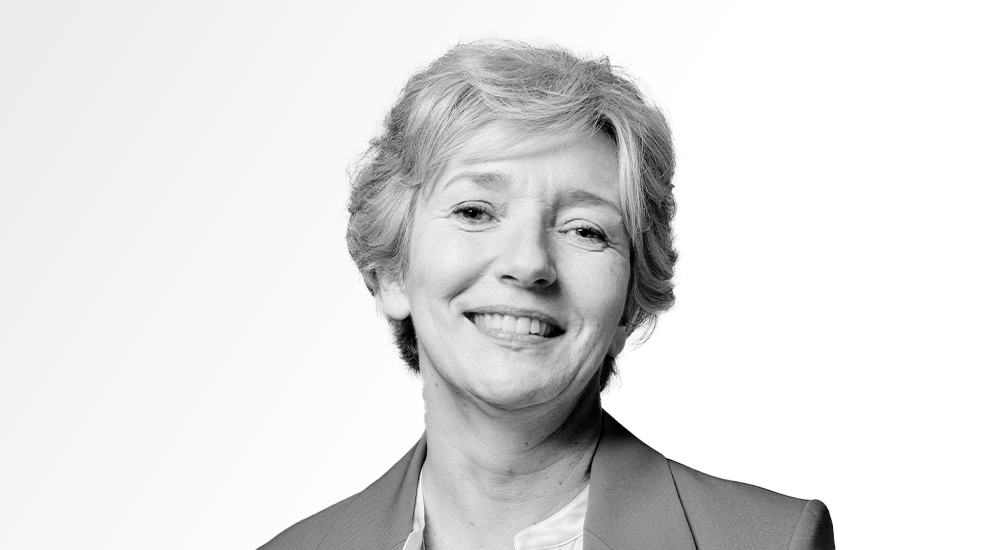Isabelle Bourcier, head of quantitative and index management at BNP Paribas Asset Management (BNPP AM), has said thematic investing can add a new dimension to environmental, social and governance (ESG) by giving fresh opportunities for investors to diversify their portfolios.
According to Bourcier, more investors are turning to thematic investing in the ESG space in a bid to profit from “megatrends” that are shaping the future of society. Highlighting the demand for ESG focused thematic ETFs, institutions that are applying ESG in their portfolio through thematic investing grew from 3% in 2019 to 28% in 2021, according to research from Natixis Investment Management.
Additionally, the number of fund selectors employing ESG through thematics has risen from 6% to 43% over the same period. Speaking to ETF Stream, Bourcier says: “Thematic investing brings a new dimension to the usual asset class categories, resulting in fresh opportunities for investors to diversify portfolios.
“It allows investors to invest in assets that are better positioned to profit from transformative changes affecting economies and redefining business models.”
While sustainable investing has boomed over the past few years, with investors flocking to ESG related investment products of all shapes and sizes, broad thematic ETFs, which zones in on structural megatrends such as demographic shifts and technological advances have also exploded.
According to Global X, there are 69 thematic ETFs listed in Europe with $38.4bn assets under management (AUM), as at the end of August, up from $10bn at the start of 2020. Despite this, it is still important to make the distinction between thematic and ESG.
Combining ESG and thematics
Looking to combine some of these megatrends with a sustainability offering, BNPP AM’s thematic range offers investors themes such as the circular economy and the blue economy, tracking trends which drivers include environmental developments, resource scarcity, economic imbalances and regulatory or political changes.
What makes these two themes easy for investors to understand is their alignment with the sustainable use and production of goods and services, the preservation of ocean resources, climate impact. Both are fully aligned with the European Union Taxonomy framework for sustainable finance, Bourcier says.
The BNP Paribas Easy ECPI Circular Economy Leaders UCITS ETF (REUSE) exposes investors to 50 large-cap stocks in the ECPI Circular Economy Leaders Equity index selected on their ability to fully rethink the choice and use of materials, while limiting consumption and unproductive use of resources such as raw materials, water and energy and producing less waste.
“Increased regulation, consumer awareness and scarcity of materials are significant developments that are pushing companies to search for new solutions and to adopt circular economy principles,” Bourcier adds.
“This contrasts with the ‘linear economy’ production and consumption model, consisting of extraction, production, consumption and disposal.”
REUSE’s top holdings include semiconductor manufacturers ASML Holdings (2.15%) and Advanced Mirco Devices (2.24%) as well as Coca- Cola (2.07%). The addition of Coca-Cola, the world’s premier plastic polluter in 2019, may raise eyebrows among investors, however, inclusion in the ETF is based on its pledge to build a circular economy in plastics in 2020.
Enabling investors to access the ‘blue economy’, the BNP Paribas Easy ECPI Global ESG Blue Economy UCITS ETF (BLUE), seeks to generate economic growth, improved incomes and jobs, while preserving the health of the ocean’s ecosystms.
“No one can ignore that ocean ecosystems have characteristics and resources that are essential to our well-being and to the prosperity of the global economy, although their sustainability is now under significant threat,” Bourcier says.
“Whether for tourism employment or offshore wind, the ocean is also a formidable reservoir of biodiversity to be preserved at all costs to maintain our food security and our health, and to protect our coastal areas. It is also one of our best allies in the fight against climate change, capturing nearly 30% of the CO2 emissions that human activity emits.”
Launched last year, BLUE tracks the ECPI Global ESG Blue Economy index which also offers exposure to 50 large-cap companies listed according to five categories; coastal livelihood (protection, eco-tourism), energy and resources (offshore wind, marine biotech, wave and tidal), fisheries and seafood, pollution reduction (recycling/waste management, environmental services) and maritime transport.
“Our aim is to create a greater awareness of the environmental impacts of companies’ business models, along with new regulation to preserve natural resources,” Bourcier says.
Both products have been able to justify their themes with strong returns, with REUSE and BLUE returning 22.9% and 22.8% over the past 12 months, respectively. “Protection of the ocean and circular economy are among BNPP AM’s core priorities within sustainable investment, also including energy transition, environmental protection, equality, and inclusive growth,” Bourcier continues.
“Through our stewardship policy notably, our aim is to create a greater awareness of the environmental impacts of companies’ business models, along with new regulation to preserve natural resources (as for the two examples we are discussing), and to push companies to adopt alternative development strategies while moving towards a more virtuous model.
“Our ESG analysts study companies’ ability to make appropriate changes and engage in dialogue with them to encourage them to adopt more sustainable models. Investors turn to ESG in search of investments that integrate material ESG factors in the pursuit of greater financial returns and potentially less risk.”
Not all ESG is thematic
While BNPP AM’s range offers exposure to both ESG thematic and broader sustainable investing, Bourcier says it is important to make the distinction between the two as broader ESG integration does not always focus on investing in a specific sustainable theme or themes.
“Of course, one can combine broad ESG integration and ESG thematic investing but not all ESG investing is necessarily ESG thematic investing. There is a difference between companies simply pursuing sustainable practices and those deriving a significant proportion of their revenues from services and products related to sustainable themes,” she says.
By their very nature themes are likely to run their course, meaning some can be discounted by the market sooner than others. On the other hand, Bourcier believes ESG is a pure long-term play decision within a core allocation.



